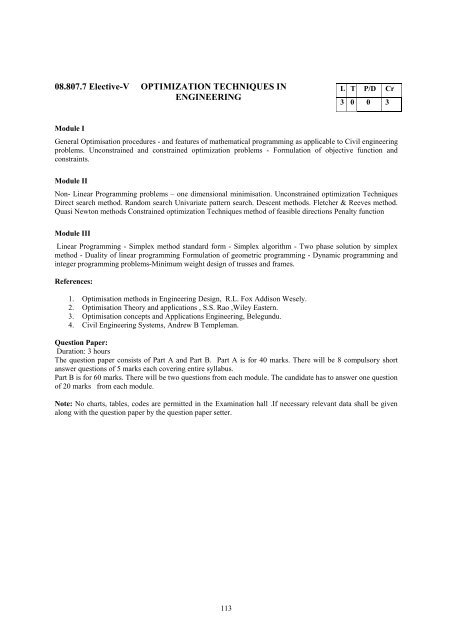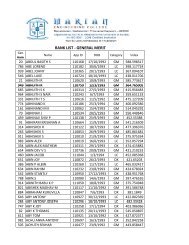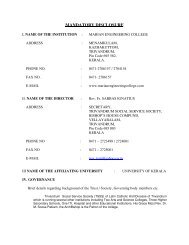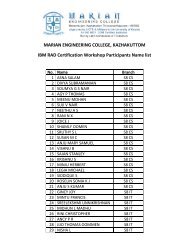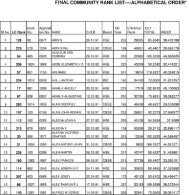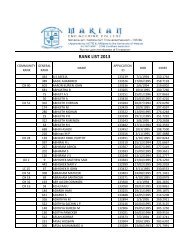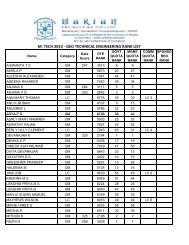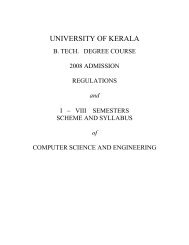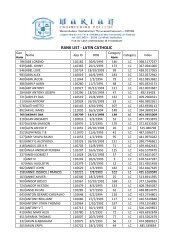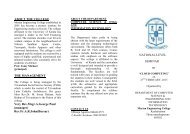UNIVERSITY OF KERALA - College of Engineering, Trivandrum
UNIVERSITY OF KERALA - College of Engineering, Trivandrum
UNIVERSITY OF KERALA - College of Engineering, Trivandrum
You also want an ePaper? Increase the reach of your titles
YUMPU automatically turns print PDFs into web optimized ePapers that Google loves.
08.807.7 Elective-V OPTIMIZATION TECHNIQUES IN<br />
ENGINEERING<br />
L T P/D Cr<br />
3 0 0 3<br />
Module I<br />
General Optimisation procedures - and features <strong>of</strong> mathematical programming as applicable to Civil engineering<br />
problems. Unconstrained and constrained optimization problems - Formulation <strong>of</strong> objective function and<br />
constraints.<br />
Module II<br />
Non- Linear Programming problems – one dimensional minimisation. Unconstrained optimization Techniques<br />
Direct search method. Random search Univariate pattern search. Descent methods. Fletcher & Reeves method.<br />
Quasi Newton methods Constrained optimization Techniques method <strong>of</strong> feasible directions Penalty function<br />
Module III<br />
Linear Programming - Simplex method standard form - Simplex algorithm - Two phase solution by simplex<br />
method - Duality <strong>of</strong> linear programming Formulation <strong>of</strong> geometric programming - Dynamic programming and<br />
integer programming problems-Minimum weight design <strong>of</strong> trusses and frames.<br />
References:<br />
1. Optimisation methods in <strong>Engineering</strong> Design, R.L. Fox Addison Wesely.<br />
2. Optimisation Theory and applications , S.S. Rao ,Wiley Eastern.<br />
3. Optimisation concepts and Applications <strong>Engineering</strong>, Belegundu.<br />
4. Civil <strong>Engineering</strong> Systems, Andrew B Templeman.<br />
Question Paper:<br />
Duration: 3 hours<br />
The question paper consists <strong>of</strong> Part A and Part B. Part A is for 40 marks. There will be 8 compulsory short<br />
answer questions <strong>of</strong> 5 marks each covering entire syllabus.<br />
Part B is for 60 marks. There will be two questions from each module. The candidate has to answer one question<br />
<strong>of</strong> 20 marks from each module.<br />
Note: No charts, tables, codes are permitted in the Examination hall .If necessary relevant data shall be given<br />
along with the question paper by the question paper setter.<br />
113


